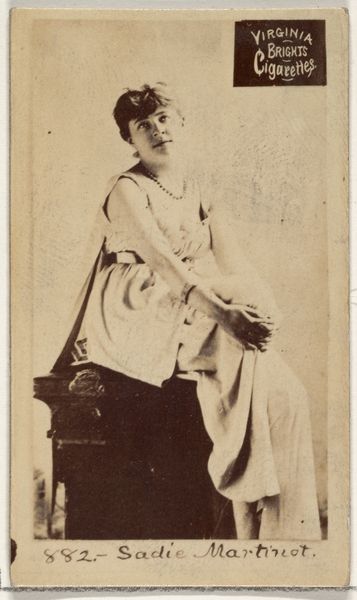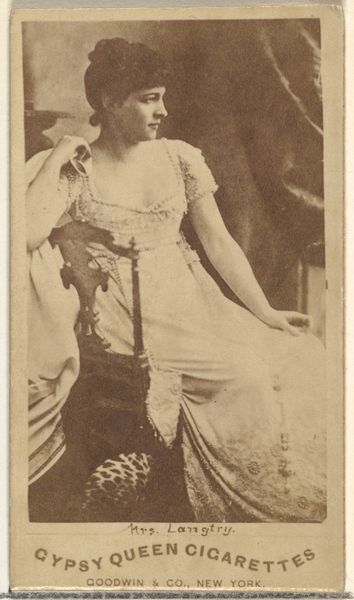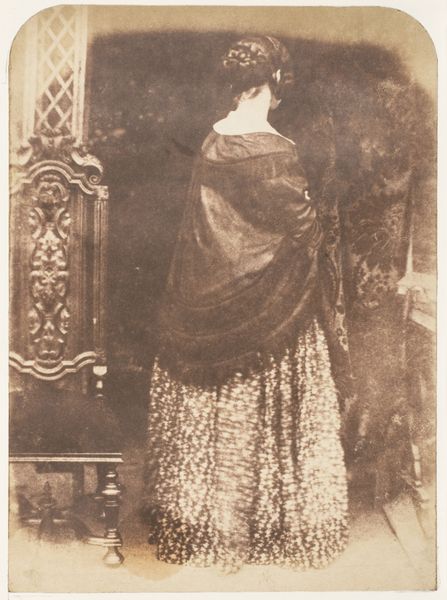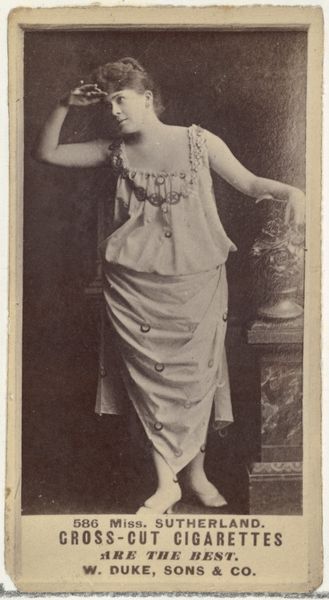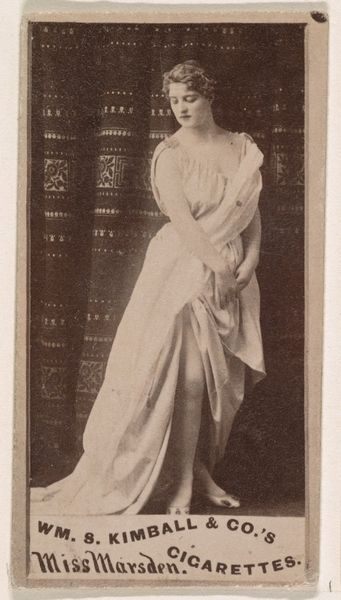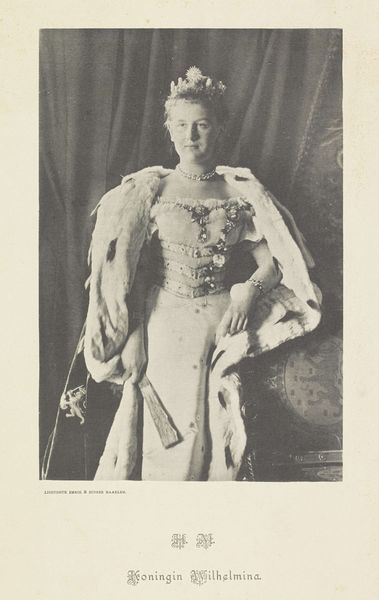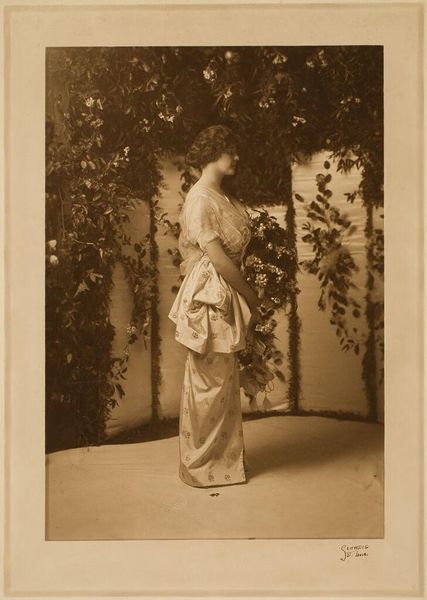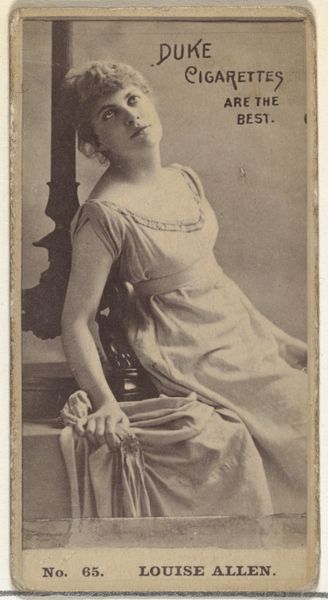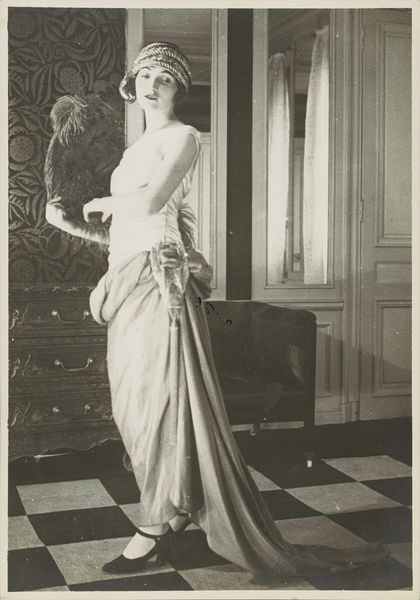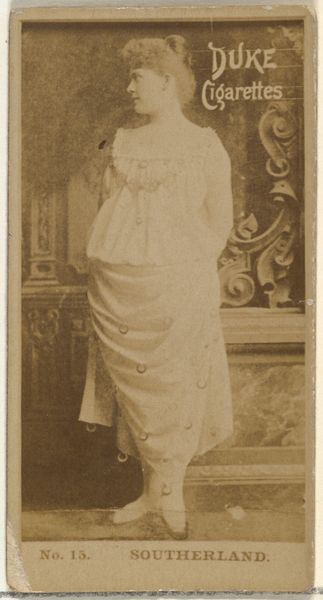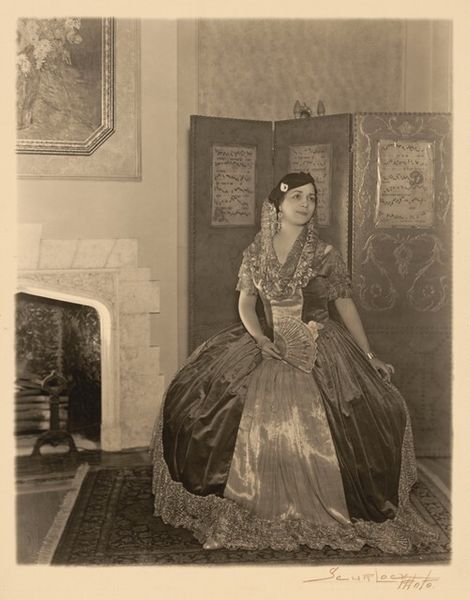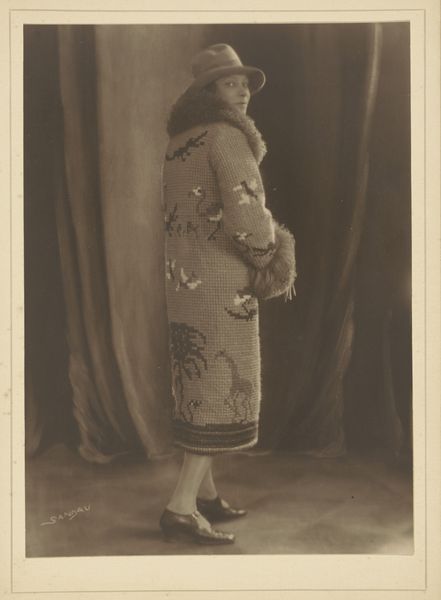
photography
#
portrait
#
art-nouveau
#
pictorialism
#
photography
#
historical photography
#
surrealism
#
lady
Copyright: Public domain
Editor: Here we have "The Silver Cap," a photograph created in 1912 by Adolph de Meyer. There’s a striking simplicity in the composition, a quiet elegance. What underlying messages do you see within the subject's appearance and the image’s visual language? Curator: Well, first I’m struck by the silver cap itself. In many cultures, silver is linked to the moon, to intuition, to the feminine divine. Her gaze, though in profile, avoids meeting ours, enhancing this sense of inwardness, of psychic depth. And look at the shadow looming behind her. Does it echo or threaten? Editor: It definitely adds a layer of intrigue! It feels like a double exposure, almost like she’s standing in front of another version of herself. Do you think this symbolizes something specific? Curator: That second self, lurking in the shadows… Consider the period. Early 20th century, a time of immense social upheaval, nascent feminism. Is this shadow representing the hidden potential, the untapped power of women in that era? Or perhaps it's the weight of societal expectations. The elaborate detailing on her garment juxtaposes with the somber palette, a subtle clash. Editor: I never thought of it that way. I was more drawn to the purely aesthetic qualities. I now see a fascinating tension between external presentation and inner world. Curator: Indeed. The interplay of light and shadow, the carefully chosen symbols—all converge to invite us into a deeper exploration of identity and societal expectations. It reflects our own internalized perceptions, doesn’t it? Editor: Absolutely. This really highlights the enduring relevance of art to hold space for cultural awareness. Curator: And to engage with that memory reflected through carefully coded symbolism. It seems Adolph de Meyer was quite intentional in this.
Comments
No comments
Be the first to comment and join the conversation on the ultimate creative platform.
